Authentic Homemade French Mayonnaise in less than 5 minutes. Add lemon for a touch of sharpness. Perfect!
So quick to make and such a useful sauce. A jar of Homemade French Mayonnaise is always in my fridge. This must be the first recipe I learnt, most probably because it is very easy to make (yes, really easy!) but also because the ingredients and their respective quantities are so simple to remember.
The magic ratio is one egg yolk to one tablespoon of vinegar. To that I add enough oil to make the mayonnaise come together and just sufficient salt to bring out the flavours. This is a French Mayonnaise at its simplest.
Jump to:
🍋 Ingredients
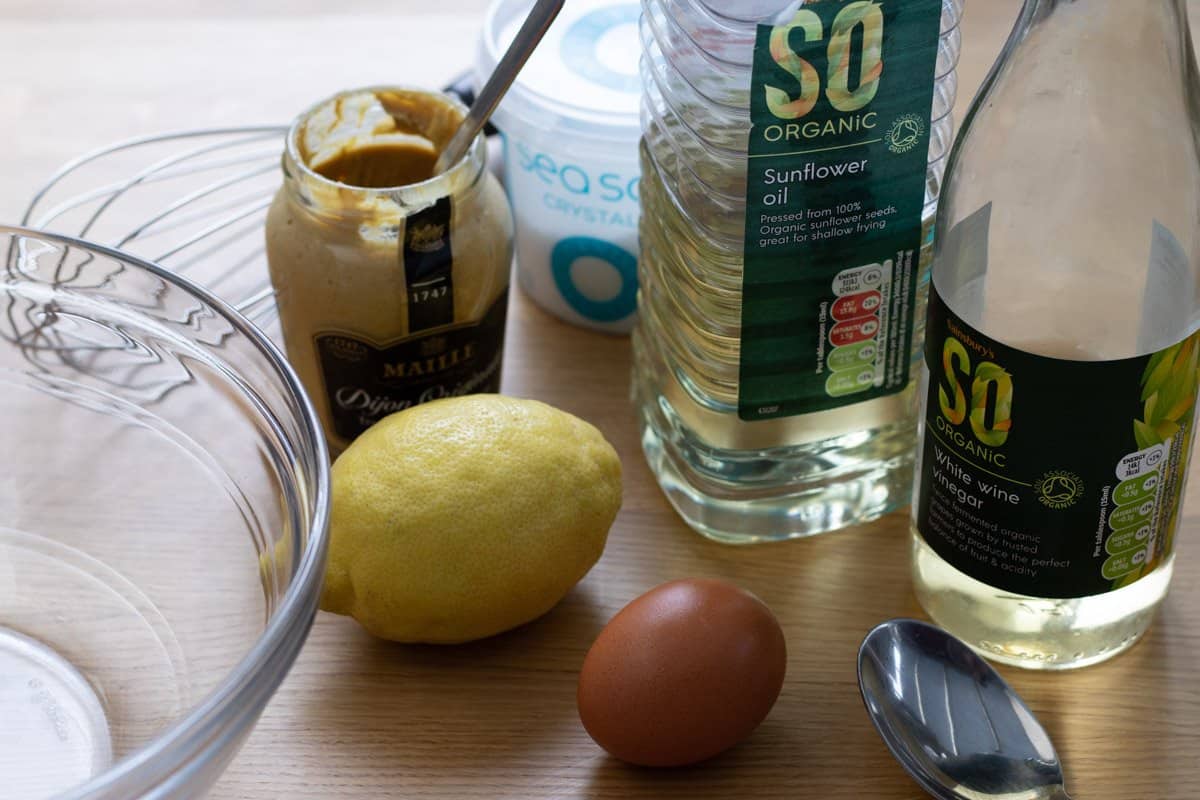
- oil
- egg yolk
- mustard (optional)
- lemon (optional)
- salt
- pepper (optional)
See the Recipe Card below for details of quantities.
What type of oil should you use?
I prefer to use sunflower oil. If I don't have sunflower oil, vegetable oil is my next choice. Although some recipes will suggest olive oil for French Mayonnaise, I find that using just olive oil can make the Mayonnaise a little bitter. I am in good company on this as the chef Richard Bertinet in his book Cook in a Class of your Own finds the same and recommends using a mixture of rapeseed oil and olive oil. He also notes that if using just extra virgin oil, it can separate shortly after you have made it. So I'm sticking with the sunflower oil.
Mustard
Whilst you don't have to add mustard, not only does it give some spice to the Mayonnaise, it helps to bind the egg yolk and oil together. This means that you have less chance of curdled Mayonnaise if you include mustard. I prefer to use Dijon mustard.
Lemon
The French Mayonnaise recipe I learnt from my mother contains no lemon. I was inspired to try adding lemon after watching the DVD that accompanies Richard Bertinet's book Cook in a Class of your Own. Just a squeeze of lemon gives a little extra sharpness to the Mayonnaise that I love. Incidentally, Richard Bertinet uses a slightly different technique to making Mayonnaise, initially mixing just the egg yolk and mustard together (no vinegar), next adding the oil, and then adding the lemon. On this, however, I'm keeping to my own method; it works.
🍽 Equipment
- tablespoon
- bowl
- whisk
- measuring jug
- jar or other container for storing the French Mayonnaise
📖 How to prevent your Mayonnaise curdling
Mayonnaise is one of those dishes that, although incredibly simple to make, success can sometimes be elusive. This is because of its annoying habit of "curdling". What is curdling? Curdling is when the oil and egg separate and refuse to bind together or "emulsify". The picture below shows a good example of curdled Mayonnaise.
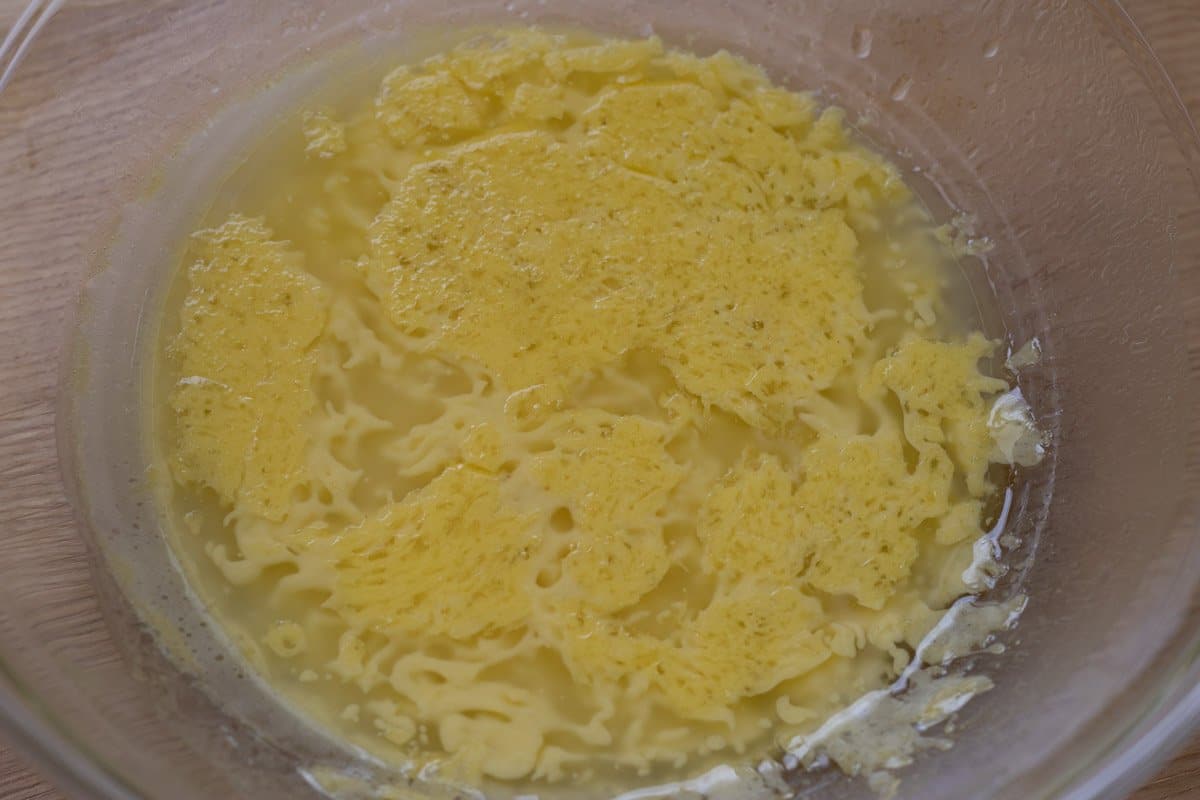
Why does Mayonnaise curdle?
My mother warned me that French Mayonnaise can be affected by the weather, particularly if there is "thunder in the air", when it is more likely to curdle. Is there any science to support this? I don't know. In any event, it is immensely comforting that if your Homemade Mayonnaise does curdle, it is nothing to do with your cooking skills. The weather was just not "right".
How to prevent curdling? The Golden Rule.
In the Top tips section below, I have listed a number of ways to prevent curdling. The most important of these is to add the oil to the egg and vinegar mixture very slowly, particularly in the early stages of adding the oil.
So, drizzle just a little bit of oil into the egg and vinegar mixture to begin with, whisking all the time until it is thoroughly mixed in. I always use a balloon whisk, but you can use an electric mixer instead. Then drizzle a tiny bit more of oil, and again whisk in thoroughly before adding another little drizzle of oil. Keep going like this, until the Mayonnaise shows signs of emulsifying; the Mayonnaise will start to turn a slightly lighter colour and the mixture will being to thicken slightly. You may then start to speed up the rate at which you add the oil. But take care!
My sauce has curdled. What do I do?
Ignore the weather and start again!
Using a fresh egg yolk, and clean dry bowl, follow steps 1 and 2 of the instructions for making French Mayonnaise. At step 3, instead of adding the oil straight away, instead add the curdled sauce mixture to the egg and vinegar mixture, being very careful to drizzle in the curdled mixture very slowly and in small amounts. Whisk in each small amount added thoroughly, before adding a further amount.
Once all the curdled mixture has been added in successfully (with the sauce showing signs that it has safely emulsified) continue with adding the oil and following the rest of the instructions.
🔪 How to make French Mayonnaise

Step 1. Place 1 egg yolk, 1 teaspoon of mustard and 1 tablespoon of vinegar into a mixing bowl.

Step 2. Mix the egg, mustard and vinegar together well.
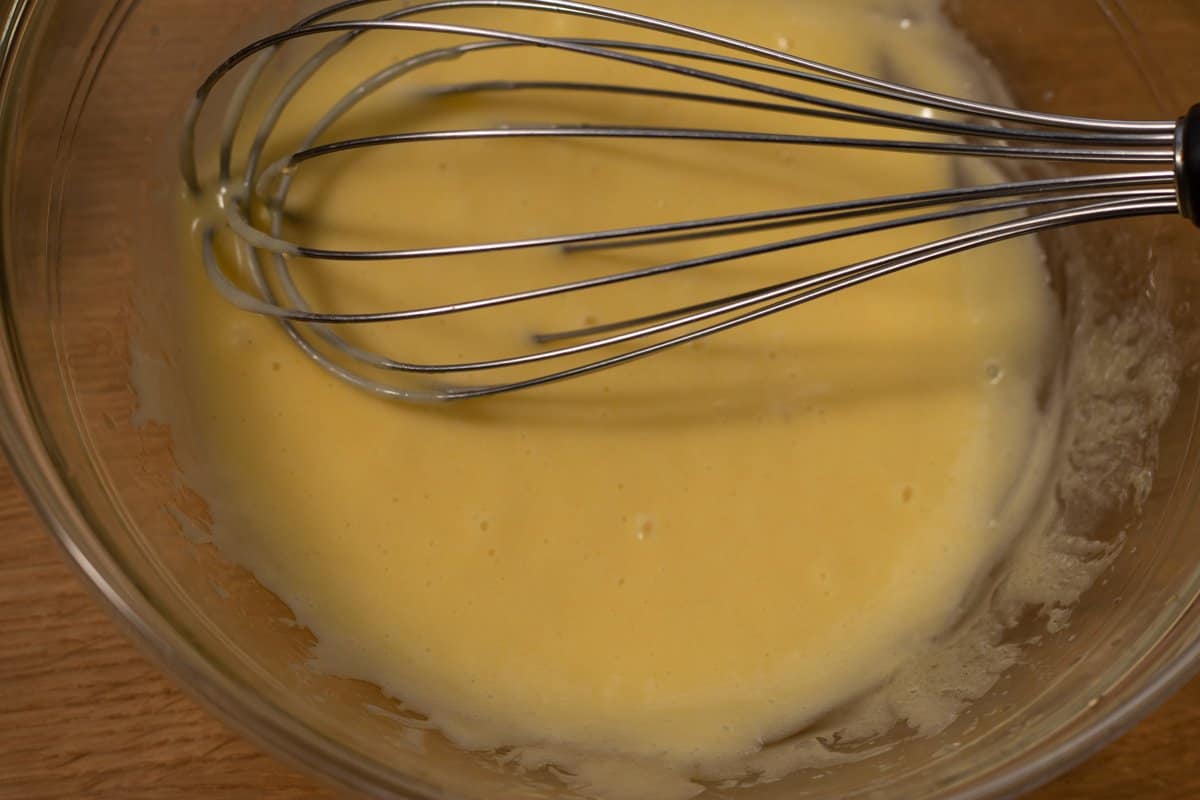
Step 3. Drizzle a little oil into the egg mixture very slowly, whisking all the time. Add the oil in stages, a drizzle at a time, whisking all the time and in between drizzles. This is a critical stage and to avoid curdling do not rush it.

Step 4. Keep adding the oil in stages, whisking in all the time. The oil and egg mixture will emulsify (combine to form a mixture with a smooth consistency) and gradually become thicker and thicker. Continue adding the oil until the Mayonnaise is the level of thickness you want.
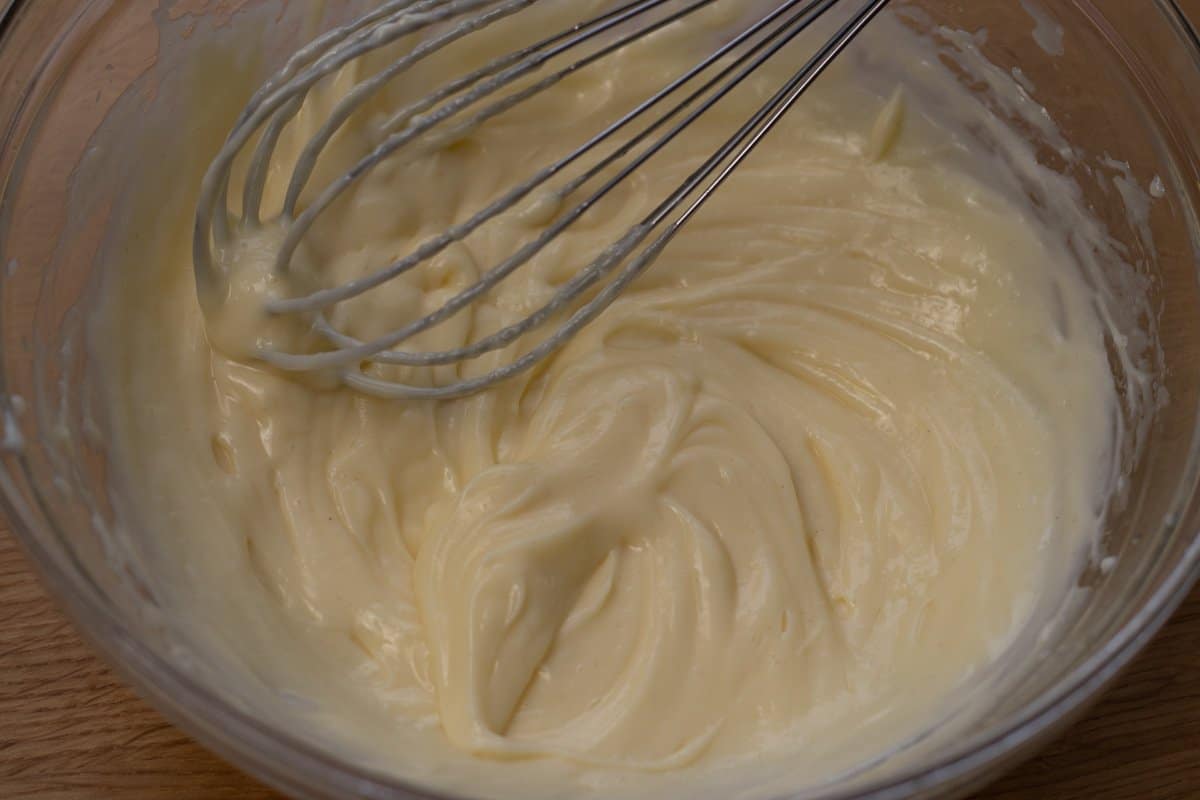
Step 5. Add a squeeze of lemon and mix in thoroughly. The colour of the Mayonnaise will become lighter. If the Mayonnaise is no longer thick enough, add a little more oil. Then add salt by degrees, tasting after you mix each small amount of salt in until the Mayonnaise reaches the level of taste you are happy with.
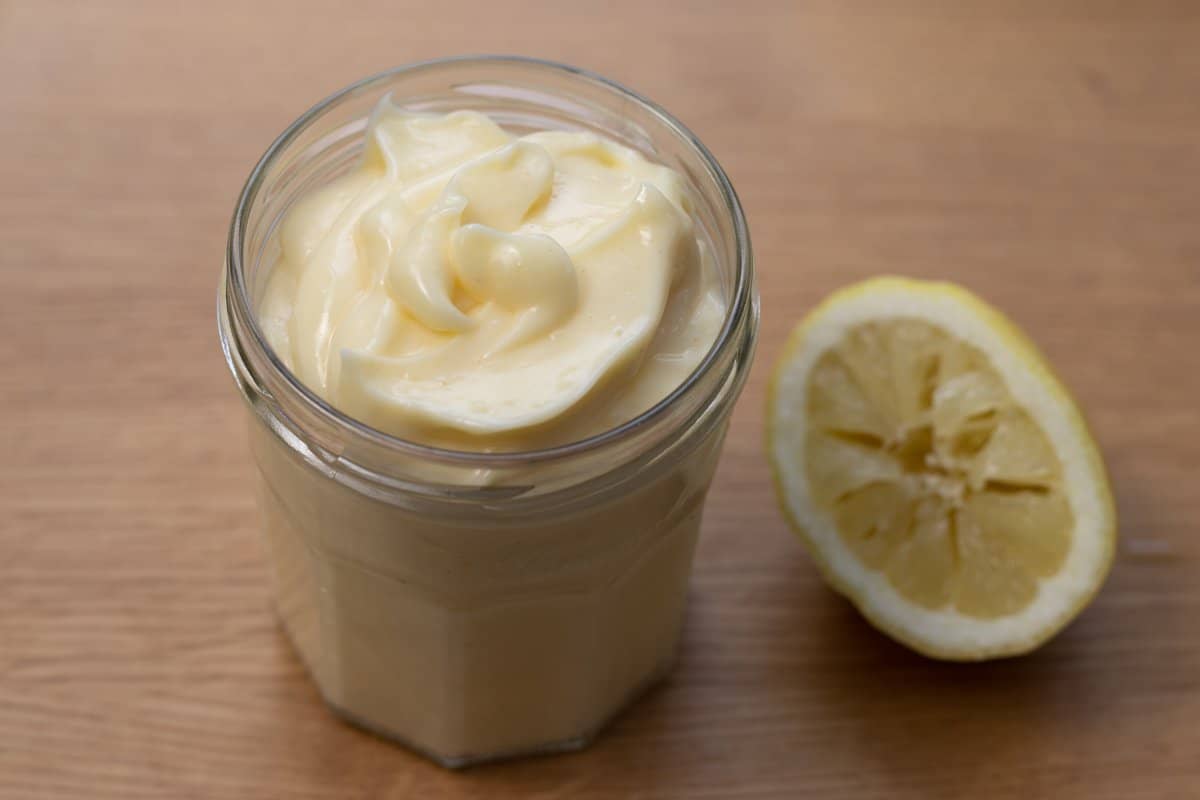
Step 6. Put the mayonnaise into a container, ideally with a lid and store in the fridge.
🍲 Storage
I like to store my Homemade Mayonnaise in a jam jar, keeping it covered with the lid. I really like the shape of the jars from the Bonne Maman range of jams, so I keep a stock of their empty jam jars (plus I love their jams). The jar you can see in the photographs is a Bonne Maman jar. I find that the Mayonnaise keeps for at least a week in the fridge.
👨🏻🍳 Top tips
- Use a slightly warm bowl. I learnt this tip from the watching the film Julie and Julia, which is about the cookery writer Julia Child. The reason for this takes me onto the next tip.
- Use eggs that are at room temperature. The egg yolk is an emulsifier and helps the oil combine with the vinegar and lemon. Harold McGee in McGee on Food & Cooking explains that egg yolks work better as emulsifiers when they are warm.
- Add the oil very, very slowly, drizzle by drizzle, whisking all the time and in between drizzles. This stage must not be rushed, particularly when first adding the oil to the egg yolk mixture. This is the Golden Rule of making Mayonnaise.
- Mustard is also an emulsifier. Although not essential for making French Mayonnaise, it helps to avoid curdling and, of course, give it a little extra kick.
What to Serve with Mayonnaise?
Where to start? Mayonnaise is a truly versatile sauce that may be used as is or easily adapted as the perfect accompaniment to many vegetable, fish or meat dishes.
Mayonnaise is considered one of the "mother sauces" (sauce mère) in French cuisine, meaning that it is a sauce that may be used as a base for many other sauces. For instance, coleslaw dressing, remoulade and sauce tartare are all examples of sauces with Mayonnaise as their base. In fact there is the view that, strictly speaking, Mayonnaise does contain mustard and that Mayonnaise with mustard is a variation of the basic mother sauce.
Here are some of the dishes with which we use our Homemade French Mayonnaise.
- Coleslaw. Mayonnaise is perfect as a coleslaw dressing. You can vary the flavour by adding yoghurt or crème fraîche for a more tangy, lighter coleslaw dressing. Adding soured cream gives an extra creamy coleslaw dressing. I like to use this French Mayonnaise to make our Creamy Lemony Coleslaw with Apples (Sugar-Free).
- Oeufs Mayonnaise. A simple combination of hard-boiled eggs with Mayonnaise creates the bistro classic of Oeufs Mayonnaise.
- Canned Tuna Fishcakes.
- Celeriac Salad (Céleri Rémoulade).
- Chips (French Fries).
📋 Recipe Card
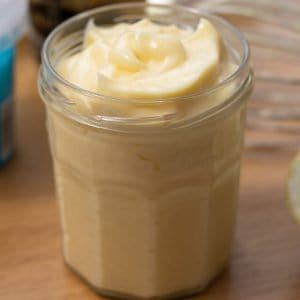
Homemade French Mayonnaise (quick and fool-proof)
Ingredients
- 1 egg yolk
- 1 tablespoon vinegar (preferably wine vinegar)
- 1 teaspoon mustard (preferably Dijon mustard) (optional)
- 1¼ cups oil (preferably sunflower oil) This is an approximate measurement. You may need a little more or less to reach your preferred consistency.
- a squeeze of lemon
Instructions
- Place the egg yolk, mustard and vinegar into a mixing bowl.
- Mix the egg, mustard and vinegar together well.
- Drizzle a little oil into the egg mixture very slowly, whisking all the time. Add the oil in stages, a drizzle at a time, whisking all the time and in between drizzles. This is a critical stage and to avoid curdling do not rush it.
- Keep adding the oil in stages, whisking in all the time. The oil and egg mixture will emulsify (combine to form a mixture with a smooth consistency) and gradually become thicker and thicker. Continue adding the oil until the Mayonnaise is the level of thickness you want.
- Add a squeeze of lemon and mix in thoroughly. The colour of the Mayonnaise will become lighter. If the Mayonnaise is no longer thick enough, add a little more oil. Then add salt by degrees, tasting after you mix each small amount of salt in until the Mayonnaise reaches the level of taste you are happy with.
- Put the mayonnaise into a container, ideally with a lid and store in the fridge.


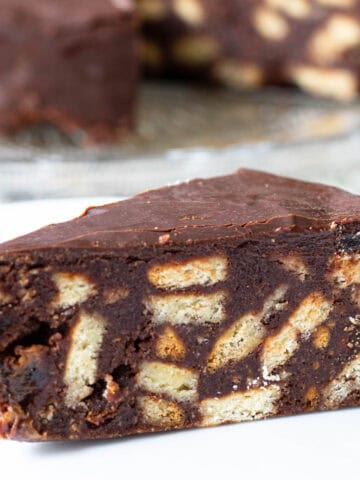
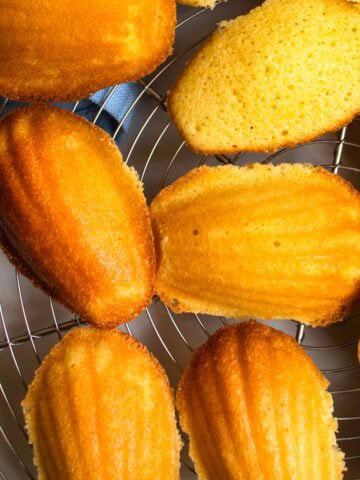

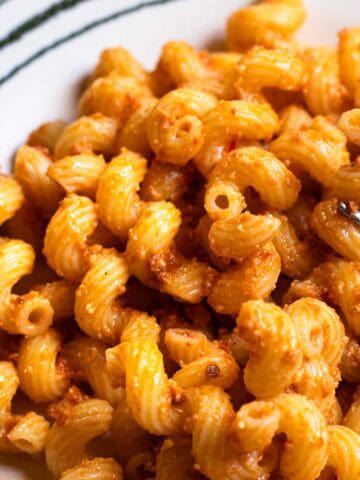
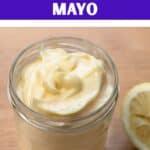
Char says
Excellent. I used the stand up mixer and doubled the recipe. I used white wine vinegar. It came out beautifully.